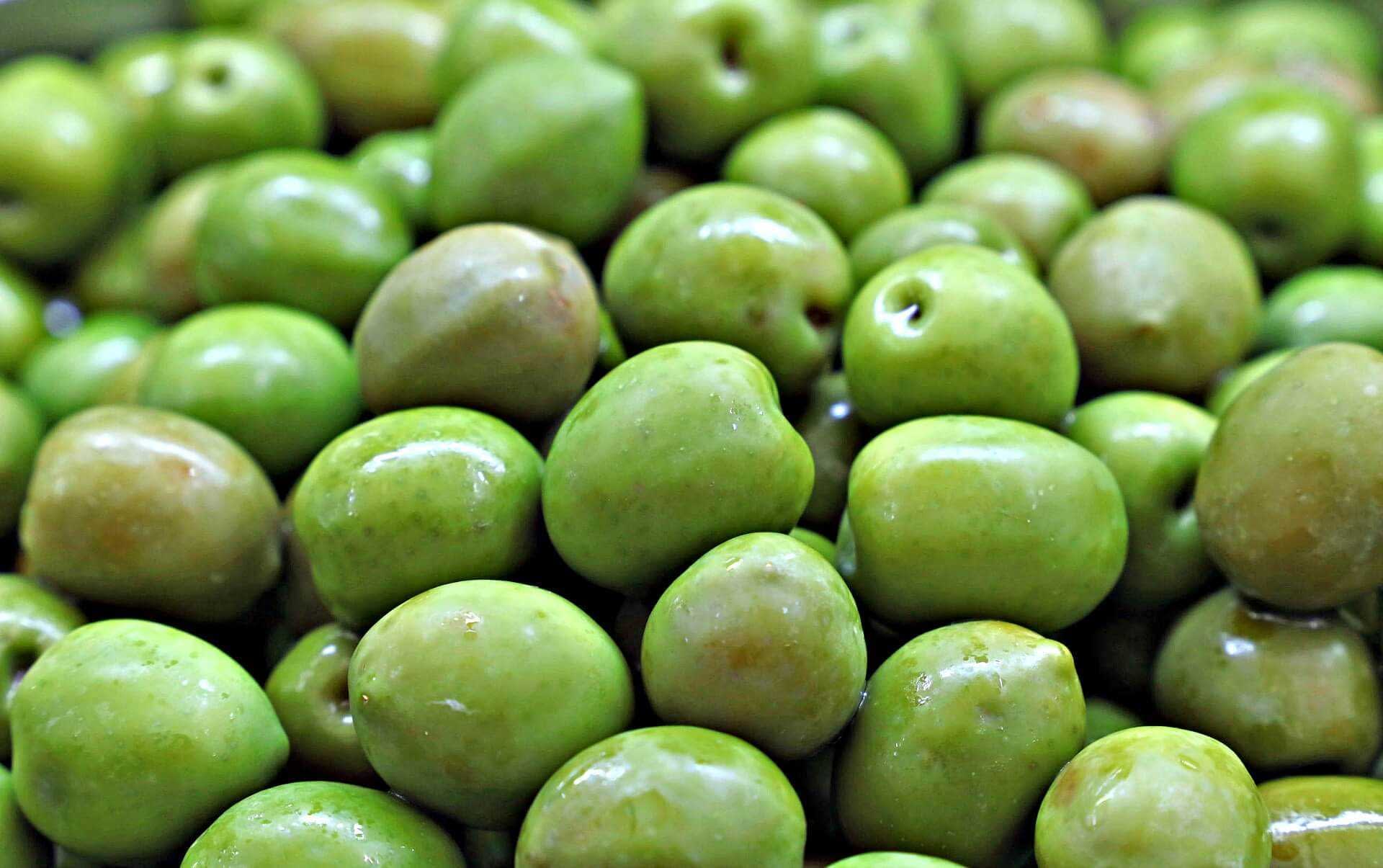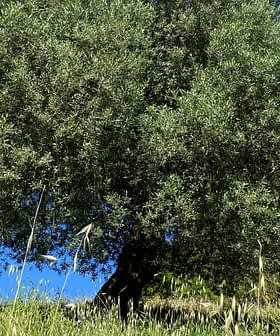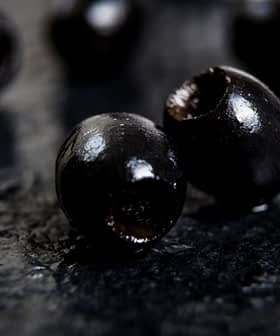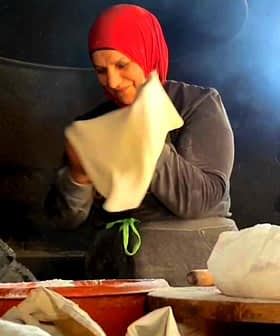On Table Olives and Cocktails
Olive Oil Times writer Ylenia Granitto can't enjoy a simple Martini without contemplating its olives.
 Photo by Edi Solari
Photo by Edi SolariAwaiting sunset on a sandy beach was a good time to have an aperitif at the nice bar overlooking the sea, so we ordered Martinis.
According to the International Bartender Association, this timeless before dinner cocktail should be made from 6 cl (6 parts) of Gin and 1 cl (1 parts) of Dry Vermouth. “Pour all ingredients into mixing glass with ice cubes. Stir well. Strain in a chilled martini glass. Squeeze oil from a lemon peel onto the drink, or garnish with an olive,” according to the official recipe.
See Also:The Perfect Olive Oil Martini
Some prefer to savor the green fruits (one or two or three) in the drink, while others opt for olives “on the side.”
“We can truly speak of a fifty-fifty division between those who like the fresh essence of lemon and those who relish the savory taste of the olive,” the publisher of Il Gin, Vanessa Piromallo affirmed, highlighting the different aromas of the two ingredients and their impact on the perfumes of the cocktail.
So everyone has different tastes, and we welcome all of them. The thing we are really interested in is the quality of the olives, which “has increased considerably during recent years,” Cristina Falcinelli told Olive Oil Times. The experienced olive oil and table olives taster was among the judges at the competition for the best table olives Monna Oliva. “Our panel of experts found that all the samples under assessment were not only without defects but also of great quality,” she noted, considering how this extraordinary outcome demonstrates the growing commitment to quality production.
“This tells us that this could be a key product, also for very small growers, for staying in the market competitively,” Falcinelli suggested. “At this stage, it would be helpful to increase awareness as has happened with the extra virgin olive over the last decade. However, the trend of the market is toward a demand for a better, well-crafted product,” she observed, pointing out that consumption is growing significantly in non-producing regions such as northern European ones.
“The Italian territory can count on a huge biodiversity, with so many cultivars which are often well manufactured also abroad. For example, we tasted excellent Bella di Cerignola in Turkey, and this is proof that the competition is increasing, and producers should start to pay attention to competitors,” she noted, drawing attention to the wide range of preparations including particular styles like the Scabecciu from Sardinia, and cracked olives from Calabria.
One of the winners of Monna Oliva is Cosmo Di Russo. “We have always produced table olives,” said the farmer from Gaeta. “My grandparents also dealt with other productions. Then ten years ago, we started to make high-quality extra virgin olive oil and decided to focus only on olive growing,” he said, claiming that he remembered the scent of the black olives since childhood.
“We manage 7,500 olive trees, spread over a rough territory laid out in terraces, for the production of white olives, black olives and high-quality extra virgin olive oil,” he explained. Sixty to seventy percent of his production is devoted to table olives. “When we use Itrana harvested in November we call it a white olive, and when it is picked in March it is designated as a black olive. The latter, in 2016, obtained the denomination Oliva di Gaeta DOP,” Di Russo noted.
“The transformation of both types is similar, and it requires daily work, since absolute cleanliness is fundamental,” he said. The olives are first selected by calipers and then by hand to eliminate the flawed ones. In the afternoon, fruits collected during the day are put in water. Both de-bittering and packaging are natural, using only salt.

Cosmo di Russo at his farm in Gaeta
“When the olives are in the water, a spontaneous fermentation starts, as we do not use starters,” Di Russo specified. “After 7 or 8 days we begin to monitor the pH level which naturally decreases, and as soon as it is below 5 we start salting progressively up to the amount of 7 percent by weight of the olives, according to a stepwise method called all’Itrana.
“After a period of at least 12 – 14 months for the white olives and after a shorter interval for the black ones, they are packed with the original brine. This time is necessary because the process, from manufacturing to preservation, is completely natural.
“The black olive is a difficult production because it is harvested at the end of winter and you have to deal with adversities like wind, hail and so on,” said the producer. “Moreover, you have only a few months to prepare the plant for the following season.”
This means that, due to the completely natural transformation, the cost of black olives is slightly higher, but it is still the most requested product.
“A chemical manufacturing would take a shorter time and a lower cost, but the olive would have completely different characteristics,” Di Russo said, adding that their white olive has a very high polyphenol content because it is not subjected to any acidification, and even the original brine they use in the whole process is rich in probiotics.
The white is perfect as an aperitif in combination with prosecco or beer, while the black is great for cooking, as Francesco Zamuner, chef and owner of La Tavola dei Cavalieri in Formia, recommended.
“I use it in my Tonnarello with cod,” he revealed. “I first I prepare tomatoes confit at low temperature in the oven at 50°C (122°F) for 5 hours, I add sugar, salt, orange and lemon peel, and thyme. I pan-sear garlic, salted capers of Pantelleria and 3 – 4 pieces per serving of Oliva di Gaeta DOP. As soon as the garlic starts to brown, I add cod and tomatoes, skip with the freshly boiled pasta and it’s ready.”

Castelvetrano olives
Nicolò Asta, among the NYIOOC winners with the Valmore Nocellara Monovarietal devotes a share of its olive groves located in the area of Castelvetrano to the production of table olives. At Valmore, in the south-west coast of Sicily in the heart of the Valle del Belice, between 20 and 50 percent of the secular plants of Nocellara grown in the family farm are manufactured according to different styles.
“Harvest generally takes place in September, but it may vary by a couple weeks earlier or later,” explained the Sicilian farmer. “The plants whose olives will end up on the consumers’ tables are constantly irrigated as they always must be flourishing in order to keep the fruit’s growth regular, while olives intended for the production of extra virgin olive oil need some water stress which stimulates their chemical features,” observed Asta.
Throughout this area, harvest requires at least siz weeks, but farmers try to move fast to avoid adverse weather conditions. If there is a bad weather forecast, they hire even more workers to finish faster.
“We work by hand, with baskets or special crates. Fruits are put in boxes and, on the same day, they are delivered to the facility,” he explained. “They are weighed, measured by calipers, and put into barrels accordingly.”
He uses a solution of water and 6 to 8 percent salt which can reach 10 percent at most based on factors like pH and water hardness. “It takes a few months during which we stir the olives in the solution and monitor them by smelling,” Asta explained. Then, the olives are left to ferment in ventilated sheds conditioned to not more than 18°C (64.4°F). In January the olives are ready.
“The Castelvetrano method provides for a solution of water and lye,” the producer continued. “After one or two hours salt is added to neutralize the action of lye and, within a month, the bitterness is gone and the olives are sweet, crisp and ready to be consumed.” Then, the liquid is thrown into the appropriate collectors, the olives are washed, placed in clean barrels and a new solution of water and lye is created.
Finally, the fruits end up in water and salt, and they are ready to be consumed. “We manufacture also other types of olives, like those cracked and baked,” he said.
“Upon request, Castelvetrano olives can be pitted — perfect to plunge into your Martini.”








